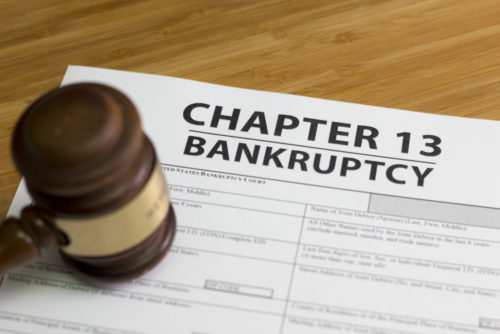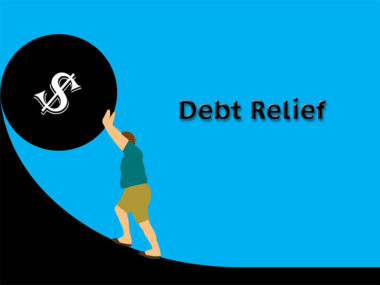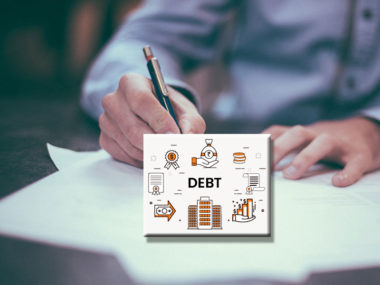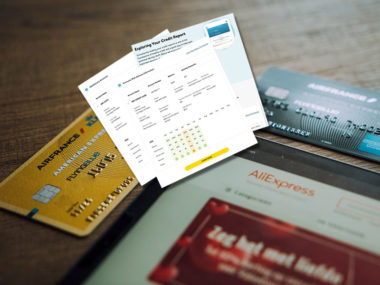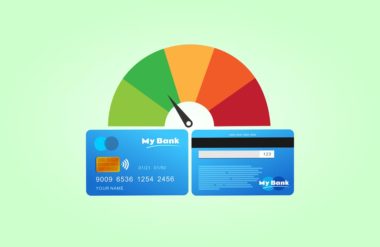Many bankruptcies aren’t due to reckless spending or irresponsible behavior. In most cases, a series of unfortunate events or a medical illness creates financial problems that are difficult to resolve. A recent report found that two-thirds of people who filed for bankruptcy said medical issues were the main reason for their financial downfall.
Chapter 13 bankruptcy lets you restructure overwhelming debts such as medical bills under the guidance and protection of a federal bankruptcy court. Through bankruptcy, you can renegotiate a longer and more favorable repayment period. In many cases, the court discharges certain bills so you’re no longer responsible for them.
Also known as the “wage earners plan,” it’s one of three types of bankruptcies an individual can turn to if they need a fresh financial start.
Table of Contents
How Does Chapter 13 Bankruptcy Work?
According to the Administrative Office of the U.S. Courts, a “wage earners” bankruptcy helps individuals who earn regular income negotiate a plan to repay all or part of their debts. A successful petition will result in the discharge of debt, meaning the wage earner will be relieved from having to pay certain obligations, such as medical debt or credit card bills. The individual makes three to five years’ worth of payments to a court-appointed bankruptcy trustee who distributes the funds to creditors, whose claims were approved by the court.
A Chapter 13 bankruptcy is especially beneficial for homeowners at risk of foreclosure. Filing creates an automatic stay through which the bankruptcy court puts a hold on the foreclosure by stopping most creditors from taking action. As long as the homeowner stays current on the mortgage payments and makes up the delinquent amount through the Chapter 13 plan, the lender cannot foreclose.
There are certain conditions a debtor must meet to file for a Chapter 13 bankruptcy:
- The debt limits are $394,725 in unsecured debt and $1,184,200 in secured debt, according to the Administrative Office of the U.S. Courts;
- The debtor must have regular income;
- The petitioner must be current on tax filings;
- The debtor cannot have filed for Chapter 13 bankruptcy in the past two years or Chapter 7 in the past four years;
In a Chapter 13 filing, a debtor must repay at least some of their debt, as opposed to a Chapter 7, which completely eliminates a person’s debt. The courts developed a means test to ensure that debtors who can pay for at least some of the debt meet some of their obligations.
A means test looks at the petitioner’s income and expenses to calculate whether the debtor has any money left over each month to allocate towards reducing their debt. The means test considers medical bills, utility bills, payday loans, credit card balances, and unpaid income taxes as applicable expenses.
The court may find that some of the debt does not need to be repaid and will be discharged. The debt is categorized into three types:
- Priority debt, which cannot be discharged and must be paid in full, such as child support, taxes, and student loans (unless an adversary proceeding is filed to erase the student debt).
- Secured debt, which must be brought current and paid back over time, such as a car loan or a mortgage.
- Unsecured debt, including medical bills and outstanding credit card balances. The court may reduce these or forgive any remaining balances once the repayment plan is completed.
When to File for Chapter 13 Bankruptcy
Filing for a Chapter 13 bankruptcy can be beneficial for individuals overwhelmed by a dangerous amount of debt. Not addressing the debt may result in a damaged credit history and the loss of a home or other property.
An individual should consider filing for Chapter 13:
- To save a home from foreclosure and catch up on delinquent payments.
- To renegotiate student loan terms that take up a large portion of their monthly budget.
- To restructure or reduce personal loans, such as payday loans and car loans, when the interest rate makes the loan unaffordable.
- To protect a co-signer through the automatic stay that prevents creditors from taking action.
Pros and Cons of Chapter 13 Bankruptcy
A Chapter 13 bankruptcy provides a person with a fresh start. Mounting debt can accrue to the point of becoming insurmountable. The bankruptcy process teaches an individual an important lesson, and hopefully their financial mistakes won’t be repeated. Weigh the pros and cons of filing for Chapter 13.
Chapter 13 Bankruptcy Pros:
- Access to financial literacy help;
- Immediate stop of collection activity by creditors;
- Protects a co-signer;
- Can stop a home foreclosure;
- Can help with mortgage modification;
- Converts IRS debt into a payment plan;
- Gives the petitioner a second financial chance;
- Assets such as homes and vehicles do not have to be sold;
- The court may dismiss a portion of the debt;
Chapter 13 Bankruptcy Cons:
- Will affect credit score;
- Repayment lasts three to five years;
- A debtor must dedicate all disposable income towards debt repayment;
- Financially restrictive for three to five years;
How to File for Chapter 13 Bankruptcy
Individuals considering bankruptcy should consult with a bankruptcy attorney or a nonprofit credit counseling agency. A professional can guide you on whether bankruptcy is the best solution to getting your finances back in order, as well as help you with the complex process. Here is how to file for Chapter 13 bankruptcy:
- Gather documents such as tax returns, paystubs, other income, property, assets, debt, and monthly expenses.
- Download, print and fill out the forms. You may want to have a counselor or attorney help you fill the forms out and organize the documentation to minimize errors and omissions.
- Submit the forms and financial documents to a bankruptcy attorney to start the petition. Once you file, you’re entered into an automatic stay which stops creditors from attempting to collect on debts.
How Long Does a Chapter 13 Bankruptcy Take?
A Chapter 13 takes a few months to petition but it takes between three to five years to make the payments. The payment period depends on how long you need, according to your level of debt and income. Here’s a rough timeline of how long a Chapter 13 bankruptcy takes:
- Submit the bankruptcy petition: Submitting the forms and financial documents starts the process. Once you file, you’re entered into an automatic stay which stops creditors from attempting to collect debts. A bankruptcy trustee, who oversees your petition, will be appointed upon filing.
- Submit your proposed payment plan: You must submit a proposed payment plan within 14 days of filing.
- Start making payments: Even if your proposed payment plan hasn’t been approved, you must start making payments according to your proposed plan within 30 days of filing the petition.
- Meeting of creditors: 3 to 7 weeks after filing, your trustee will chair a meeting between you and your creditors to discuss any issues.
- Confirmation hearing: 45 days after the meeting of creditors, the creditors, your trustee and you will meet in court to confirm your proposed payment plan.
- Continue payments: Pay your creditors as agreed upon for the next three to five years.
- Complete a debtor education course: You are required to complete a debtor education course from a nonprofit credit counseling agency before the Chapter 13 bankruptcy is finished.
Cost of Chapter 13 Bankruptcy
There are two parts to the cost of a Chapter 13 bankruptcy: the fees to file and the monthly payment amount. The monthly payment amount varies according to your income and the amount of debt you’re required to pay.
According to the Administrative Office of the U.S. Courts, the total court cost of Chapter 13 bankruptcy is $310, including a $235 case filing fee and a $75 miscellaneous administrative fee. If you hire an attorney, the cost may vary. A NOLO survey found that the majority of filers surveyed who hired an attorney spent between $1,500 and $5,000.
Image Source: https://depositphotos.com/
